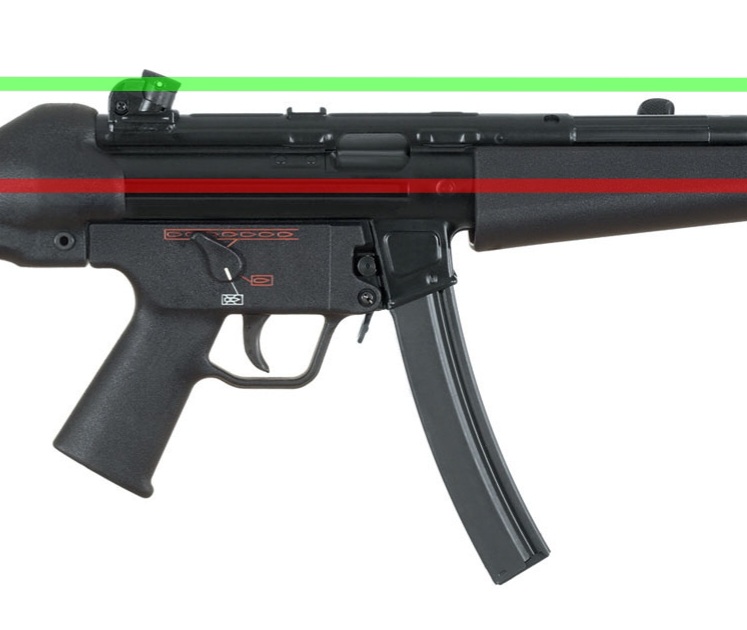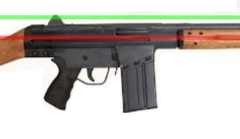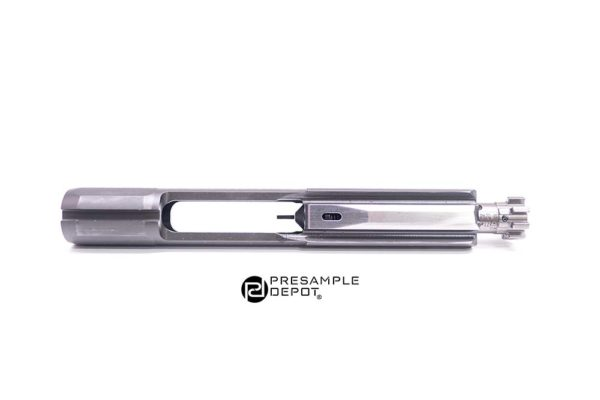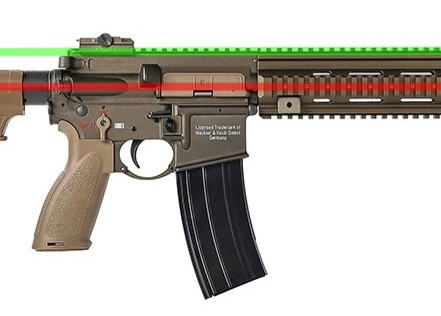A
The importance of Picatinny height overbore
The height of the Picatinny rail of a weapon over the axis of the bore of the barrel is an important metric when it comes to choosing the correct optics mount height.
Picatinny overbore height must be added to the optic mount to yield the total optic centreline overbore. This metric must be computed into ballistic calculations, including things as simple as zeroing your optic.
Failing to take this into account and not using the correct mount height for your weapon or use case can result in:
- Misses at various distances, most notably at close quarters
- Having to zero the optic at a different distance
- Not possible to acquire a sight picture under some or any conditions
- Different placement of the face of the shooter (cheek weld vs. jaw weld and others)
Different weapons have different Picatinny rail heights overbore and consequently require different mount heights and possibly different zeroing distances.
The AR-15 standard
The direct impingement AR-15 gases (applicable to the M16, M4, MK.18, MK.12, Geissele URGI, KAC KS-1 and many others) has rapidly become the standard in many weapon-related metrics, and for a good reason: it is reliable, light, accurate, incredibly shootable, modular, ergonomic and user-friendly.
The Picatinny rail height overbore of a regular AR-15 is 1.21 inches (31 mm). This is a very low height, and is possible due to the linear design of the AR platform and the low profile of the direct impingement gas system.
The consequence of the extremely low rail overbore height is that AR-15 specific optics mounts tend to be taller to compensate. Due to this, it would be a mistake to use AR-15 mount heights on non AR-15 weapons.
Other weapons
Europe has a much greater variety of carbine/rifle types in service and in hands of civilians than the US. Other platforms, almost without exception, have a Picatinny height overbore greater than AR-15 weapons, usually because the space above the barrel is taken by a piston system or a cocking handle tube. We give a few examples of Picatinny height overbore for the convenience of the end user.
The Sig Sauer MCX family of weapons has a Picatinny height overbore of 1.5 inches (38 mm). This is 0.29 inches (7.4 mm) more than an AR-15. As in the HK 416, AR-15 mounts are applicable to the MCX platform, as long as the extra height of the Picatinny rail is taken into account.

The HK 416 has a Picatinny height overbore of 1.59 inches (40.4 mm). This is 0.38 inches (9.65 mm) more than an AR-15. AR-15 mounts can be used in the HK 416 family of weapons, but the extra height of the Picatinny rail must be computed into the total height of the optic centreline overbore. The tallest AR-15 mounts should not be equally applied to the HK 416 platform.

In the H&K G36 family of weapons, “low profile” G36 Picatinny rails are 2.35 inches overbore, with minor variations depending on the exact rail model. This is almost double the height overbore of a regular AR-15 weapon. The implications are that lower mounts are the way to go with the G36 platform, and AR-15 height mounts should be avoided.

The MP5 weapons' iron sights are about 2 inches (51 mm) over the bore of the weapon. Most Picatinny rails available for MP5 will place the rail height slightly lower than this.

The HK G3/Cetme C has about 2.2 inches (56 mm) over the bore of the weapon. Most Picatinny rails available for G3/Cetme will place the rail height slightly lower than this.

The SIG SSG family of weapons iron sights are about 2.15 inches (54.6 mm) over the bore of the weapon. Mosct Picatinny rails available for this platform will place the rail height slightly lower than this.

If anyone has any information or more accurate measurements of these or other weapons, we’d be delighted to hear them at info@firstroundpop.pl and add them to this article.
On our online shop we’re offering the most common heights between 0.87 inches (22 mm) and 1.93 inches (49 mm).


Leave a comment